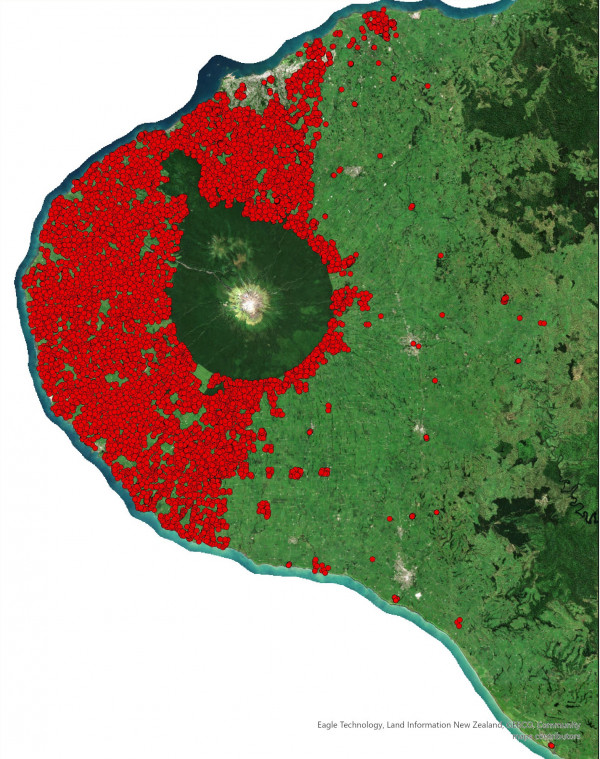Towards Predator-Free Taranaki is working with landowners to control introduced mustelids (stoats, ferrets and weasels) across 240,000ha of private land on the Taranaki ring plain.
Building on the Taranaki Regional Council’s successful self-help possum programme, the latest trapping techniques and technologies are being used to remove mustelids and help restore the region's native wildlife and plants.

The roll-out of the programme started in 2018/19 with the rural Waiwhakaiho catchment, between New Plymouth and Taranaki Maunga and has now extended anticlockwise around the mountain to Kapuni, as well as a strip n the edge of the national park.
Contractors carried out the initial control with a target of reducing mustelids numbers by 90%. They placed traps along a combination of habitat, races and farm tracks, with a variety of traps to target mustelids. They ensured correct trap placement and density and connect devices to a wireless network and app. Landowners then purchased and now maintain the traps on their property.
The latest in new trapping technology makes trapping more efficient, helping expand predator control. It includes ‘econodes’ (remote trap sensors), wireless nodes that send catch notifications to devices, and the trapping app, Trap.NZ.
This programme will reduce predator numbers and have a significant impact on improving native biodiversity values. It will also inform the future direction of large-scale predator control projects across the country.
We recognise that none of that would be possible without the support of Taranaki landowners. We are here to help - please do not hesitate to contact your contractor or the Towards Predator-Free Taranaki team at the Taranaki Regional Council if you have any questions or problems.
Click here for a trapping guide.

How to videos
What is Trap.NZ?
If you’re trapping at home, register with the online database Trap.NZ, via its website or app. Then record all your catches and also your trap checks (even when nothing has been caught). This makes Trap.NZ a source of valuable data tracking the region’s efforts and identifying gaps.